
Centre of Jaina Studies Newsletter: SOAS - University of London
It is a common stereotype of textbooks on world religions that Jains never worshipped the remains of the Jinas, and consequently never developed a ritual culture parallel to the cult of relics in Buddhism. In his well- known study The Jaina Path of Purification, P. S. Jaini (1979: 193) recalls that neither "the Srāvakācāras [the medieval texts outlining the rules of conduct for the Jain laity] nor the practices of Jainism give any indication that a cult of relic-worship once flourished within the tradition. No stūpas housing the remains of Jaina teachers have yet been discovered." Apart from isolated myths and legends in canonical and medieval Jain literature, depicting the veneration of the relics of the tirthankaras by the gods, there is no indication of bone relic worship in early and medieval Jainism to date.1 This report gives a brief overview of recent, somewhat unexpected, findings on the thriving cult of bone relic stūpas and the ritual role of the materiality of the dead amongst contemporary Jains. Although classical Jain doctrine rejects the worship of material objects, intermittent fieldwork in India, between 1997-2004, on the hitherto unstudied current Jain mortuary rituals2 furnished clear evidence for the ubiquity of bone relic stūpas and relic veneration across the Jain sectarian spectrum.3 British Academy funded research in 2000-2001 produced the first documentation of two modern Jain bone relic stūpas, a samādhi-mandira and a smāraka, constructed by the Terāpanth Śvetāmbara Jains. (Figs. 1-2)
Subsequent fieldwork demonstrated that relic stūpas are not only a feature of the aniconic Jain traditions (Figs. 3-4), but also of Mūrtipūjaka (Figs.5-6) and Digambara traditions.4 (Fig. 7) Hence, the initial hypothesis that the contemporary Jain cult of bone relics functions either as substitute or as a prototype for image-worship had to be amended. Modern Jain relic shrines are evidently not only constructed in aniconic Jain traditions as functional equivalents of temples. It also emerged that the Jain cult of relics is not only a feature of lay religiosity, but usually deliberately fostered by mendicants seeking to perpetuate the influence of their deceased teachers through the construction of stūpas and the distribution of ashes from the funeral pyre and other memorabilia.
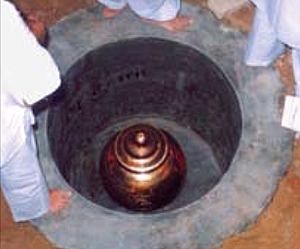
Fig.1 Entombment of the asthi kalaśa, or bone vessel of ĀcāryaTulsī, Ācārya Tulsī Śakti Pīth, Gangāśahar 21 April 2000
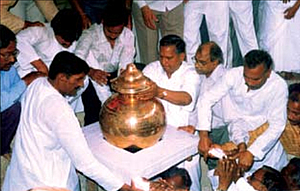
Fig. 2 Entombment of the bones of Ācārya Tulsi (1914-1997) Gangāśahar, 21 April 2000
Attitudes toward relic worship (particularly bone relics) vary across sub-sects and between individuals. Most Jains are aware of the doctrinal view that the contact with relics does not contribute to spiritual purification or liberation, but at best to the acquisition of supernatural power (P. iddhi, S. rddhi). Even this is an apocryphal interpretation. Relic worship, although widely and often publicly practiced, does not feature prominently in Jain discourse and official self-representations. It remains a clandestine practice. Yet, Jain relic stūpas are not hidden from public view. The construction of samādhi-mandiras and smārakas for prominent ascetics is a widespread phenomenon. Numerous elaborate and highly visible shrines were recently constructed for the commemoration of deceased Jain saints and for empowerment through direct contact with their sacred remains.
Three types of sectarian attitudes towards relics, manifest in observable practices, were documented. Attitudes vary along the dimensions official/unofficial, collective/ individual, body relic/contact relic:
· open or hidden bone relic veneration
· rejection of bone relic veneration, but veneration of contact relics
· rejection of both bone relic and contact relic worship (with or without the distribution of souvenirs, photographs or other memorabilia)
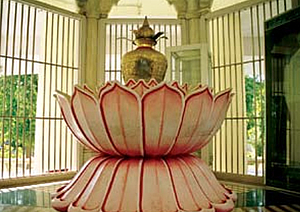
Fig. 3 Urn with bone relics of the Sthānakavāsi Pravartaka Marudhar Keśari Muni Miśrīmal (1891-1984) inside the 'bone chamber' (asthi kaksa) in Sojat
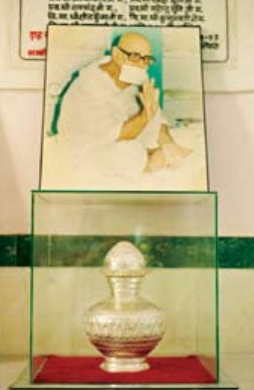
Fig. 4 Upādhyāya Puskarmuni's (1910-1993) bone relics waiting for emtombment, Udaipur, 2004
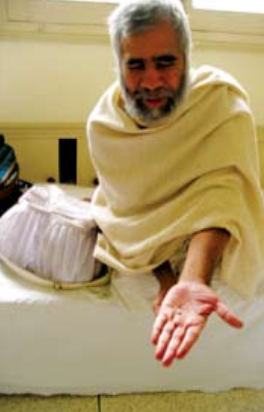
Fig. 5 Bone relic of Mūrtipūjak Ācārya Indradinnasūri (1923-2002) Preserved by Ācārya Virendrasūri Delhi 18 December 2003

Fig. 6 Mrgāvati Samādhi Mandir, J.T. Karnāl Road, Alipur, Dilli
The principal division is between sects (i.e. monastic orders and their lay followers) which routinely erect relic shrines at the sites of cremation of influential monks (rarely nuns), and sects which explicitly reject such practices. An intermediate position is pursued by groups which preserve only contact relics. Orthodox monastic orders, such as the Jnāngacch, the Āth Koti Nānā Paksa, and the two Sādhumārgi branches of the Sthānakavāsi tradition, oppose both the preservation of bone relics, contact relics, photographs and other memorabilia, and the erection of commemorative shrines or temples, as forms of jar-pūjā, or worship of lifeless objects. Individual devotees may nevertheless retain clothes or other physical memorabilia which were left behind by the ascetics at the time of their dīksā. In particular the hair of a renouncer that is shaven off at home before the initiation ceremony is often collected and preserved by family members, or the coconuts which neophytes sometimes carry in their hands before changing their dress during the initiation ceremony. Varying individual attitudes can be found across the sectarian spectrum.
The perceived hierarchy of memorabilia is based on the idea of diminishing degrees of substantive connectedness of an object with a particular saint. The scale ranges from body relics (bones and ashes, hair and nails), to contact relics or relics of use (personal possessions such as clothes, "inalienable" objects such as gaddīs, souvenirs such as pens, etc.), and memorabilia such as photographs, to commemorative 'relics' (to use a Buddhist term) such as statues. Relics are treated differently with respect to their quantity, alienability, movability, and individual/collective ownership. After cremation, bone relics are generally gathered and preserved until the time of their entombment under the funeral memorial (samādhi- mandira). The remaining ashes on the pyre can be picked up by anyone who has an interest in them. Sometimes a dispute arises amongst followers whether the bone relics should only be buried underneath the funeral memorial (either low platforms or platforms with a protective canopy-like structure), or further distributed to second-order memorials (smāraka) erected at sites chosen by influential followers. In such a case, bone relics are divided and distributed by the local trustees of a sect according to the instructions of the head of the mendicant order. Second
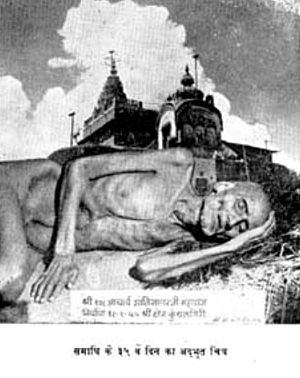
Fig. 7 Ācārya Śāntisāgara 'Daksina' (1872-1955) Samādhi Mandira in Kunthalgiri which is said to contain his relics
order relic shrines often display the urns containing body relics openly in purpose built structures, while bone relics are always buried at the sites of the samādhi-mandiras. Apparently following Hindu practices, sometimes all or parts of the body relics are immersed into one or more rivers such as the Ganges or local rivers. Through their dispersal over a large region, in various ways, body relics demarcate the sphere of influence of the successors of the deceased and transform it into a sacred space.
Bone relics are seen as particularly valuable because their quantity is finite (although relics of famous saints tend to multiply almost miraculously). Ashes, by contrast, are treated with much less respect, since the amount can be artificially increased by adding more wood than necessary to the cremation fire. Small quantities of ash are frequently distributed by the ascetics of most Jain sects to their devotees, either wrapped into paper, or in the form of small amulets made of metal. There are also amulets with bone relics inside, but this is exceptional. Often their availability is restricted to the ascetics. Members of the lay community should never get hold of the paraphernalia of mendicants. Hair, nails or clothes of an ascetic are inalienable objects which can rarely be obtained. The hair of the ascetic and his/her worldly clothes, left behind after initiation, usually remain within the family. The only other relics of use that can be acquired are the pieces cloth, etc., which eager devotees manage to tear off the dead body of an ascetic during the funeral procession.5 The different types of relics appropriated in this way are usually kept at a safe place at home. They are perceived to contain some of the miraculous (camatkārī) ascetic powers (śakti) of the deceased in crystallised form, and preserved as auspicious objects to increase the health and wealth of the members of the household.
A spectrum of individual rites of empowerment (through contact with a relic or relic shrine) and individual and collective rites of commemoration (with the help of a souvenir, mantra and/or image) can be observed. Recent studies of the popular devotional rituals held at dādāguru shrines of the Kharataragaccha and samādhi- mandiras of the Tapāgaccha by J. Laidlaw (1985: 65-7), L.A. Babb (1996: 102f.), and J. Laughlin (2003: 178f.) demonstrated the prevalence of worshippers' orientation towards the "magical power" of the famous deceased Jain monks who are reborn as gods and hence perceived to be transactionally present "miracle workers" whose help can be invoked at the stylized footprints (carana-pādukā) dedicated to them. In contrast to liberated beings, such as the Jinas, who are transactionally absent and worshipped through reflexive meditative emulation, the pūjās to deceased monks are not reflexive, since "the benefits bestowed come from the object of worship, not from the worshiper himself or herself" (Babb 1996: 131). Some of the Dādābāri shrines of the Kharataragaccha were built on the cremation sites of the four dādāgurus, while most of the more than four hundred and fifty shrines dedicated to them are merely commemorative shrines. The difference between the two types of sacred sites is yet to be studied.
There is little evidence of explicit collective relic worship at any funeral memorial, only of collective rites of commemoration on the death day of a deceased saint at the location of his funeral. However, at a samādhi-man- dira which is also a relic stūpa, rites of commemoration function simultaneously as rites of empowerment in at least four different ways: through the ascetic qualities of the "commemorative" ritual itself, through the perceived presence of ascetics reborn as gods, and of their attendant gods, who can both help the worshipper who invokes them, and because of the presence of powerful "wish-fulfilling" relics. The potential political efficacy of the structural power embodied in the ritual infrastructure is predicated on these motivating factors. In modern India, bone relic stūpas are typical for the Jains. There are no "Hindu" precedents and apparently no contemporary Buddhist parallels. Jain bone relic worship cannot be regarded as a form of Hinduization, since "Hindus" generally do not worship relics.6 Buddhist influence has been at best indirect on contemporary Jains, who generally recognize relic worship not as a "religious" but only as a "social" or "socio-religious" practice. In contrast to Buddhist forms of relic worship,7 bone relic worship amongst the Jains remains a clandestine, albeit organised, practice. The veneration of the remains of the deceased Jain saints is not doctrinally recognized, and its existence is often publicly denied. Relic worship is an unofficial, somewhat hidden dimension of Jain ritual culture. Even at the sites of relic stūpas, rites of empowerment are only performed surreptitiously, as an additional, or implicit dimension of the rites of worship (pūjā), homage (śraddhānjali) or commemoration (smrtijnāna), through a variety of ritual means, such as circumbulation.Yet the intention informing "rites of commemoration" is clearly distinguished from the intention informing wish-fulfilling "miracle rites". The prevalence of this attitude assures that amongst the Jains even today rites of empowerment remain encompassed by rites of purification.
There is no clear answer yet to the question of the antiquity of these practices. Is relic worship a new development in the Jain tradition, a modern apocryphal deviance of practice from precept? Or is it an ideologically devalued but common practice of Jains (rather than a Jain practice) going back to the time of early Jainism? According to research conducted by Dineśmuni,8 evidence for the construction of bone relic stūpas amongst the Jains can be traced back for at least three-hundred years. But the custom is probably much older. In his discussion of canonical passages on Ardhamāgadhi ceiya (caitya) and thūbha (stūpa) collected by Pischel (1900/1998 §§ 134, 208), Schubring (1935/2000 § 25: 49f.) already suspected that the description of the heavenly worship of the relics of the Jinas (P. jina-sakahā, S. sakthin = asthi) by the gods in the canon "most certainly follows earthly examples" and that the Jains must have "erected stūpas since long".9 He remained sceptical, however, about some of the either "untenable" or "inexplicable" interpretations of Jayaswal (1918) of the famous Hāthigumphā inscription of king Khāravela of Kalinga at Udayagiri (Orissa) of c. 2nd-1st Century B.C.E10 which offers what seems to be the first epigraphic evidence of bone relic stūpa worship amongst the Jains, though no relic chamber was excavated at the site.11 In line 14 of the inscription, the words kāyya-nisīdīya or kāya-nisīdiyāya appear, which Jayas- wal and Banerji (1933: 89) translated as "relic memorial"; though the word kāya, corporeal, could also refer to a building, not just to a relic, as critics pointed out.
Although the worship of relics is unknown within the brāhmanical tradition,12 the burial of bones and ashes and the construction of burial mounds were practiced already in Vedic times (Rg Veda 10.18.11-12, 7.89.1).13 These burial mounds, especially the round structures de-scribed in Satapatha Brāhmana 13.8.1-2, are generally regarded as pre-figurations of the later Buddhist relic stūpas,14 and by extension also of the famous Jain stūpa found at Kankali Tila in Mathurā.15 (Fig. 8) A. Fuhrer's excavation of this stūpa in 1889-90 did not reveal any relic chamber or relics, which seemed to confirm that, although Jains constructed "commemorative" stūpas at an early date, bone relic worship was never practiced. G. Buhler (1890: 328f.) wrote: 'The worship of stūpas has, in my opinion, not been borrowed by the Jainas from the Buddhists. It was, I think, the common habit of various ancient sects to erect funeral monuments in the Stūpa form to their great teachers (just as the so-called samādhis are still built all over India in honour of distinguished ascetics) and to worship them".16 Buhler argued that even "the term chaitya or cheia originally meant 'a funeral monument in honour of a teacher or prophet', not a temple, as it is now interpreted" (ib.); but did not discuss the difference between commemorative stūpas and relic stūpas. Samādhi-mandiras and nisidhis}1 that is, small shrines erected in memory of prominent Jain ascetics at their places of sallekhanā or cremation, are in evidence from the early medieval period onwards. Yet, no indication of relic worship was ever found at any of the Jain shrines. (Excavations are understandably prevented by the community). P. Granoff (1994: 151, n. 28) noted that there is "evidence from inscriptions that certain monks were worshipped after their death, and that stūpas and footprints were continuously dedicated to these monks", yet "there is little evidence in any of the medieval biographies that the remains of the dead monk were worshipped or that there was a cult of any importance of the stūpa" (p. 150). J. Laughlin (2003: 200 n. 523) also suspected that none of these monuments "were stūpas in the Buddhist sense, containing the bodily relics of the monks, but were more like cenotaphs". N. Shāntā (1985/1997: 256, n. 348) was under the impression that the "reformed communities, the Sthānakavāsis and the Terāpanthis, who perform no temple worship, do not [even] erect samādhi-mandiras".
This short review of the textual, archaeological and anthropological literature on Jain stūpas and relic worship demonstrates that, thus far, academic studies have concentrated only on commemorative rituals and the worship of heavenly gods, not on popular rites of empowerment through relics, which are officially derided. Popular Jain relic cults such as collecting hairs or clothes of ascetics, dead or alive, have occasionally been documented in the footnotes of the sparse ethnographic literature on the Jains. However, they were largely dismissed as "non-Jain" forms of "hinduization". P. Granoff (1992: 194) by contrast argued that "all worship in Jainism as it centers around images and temples is in some essential way worship of the dead", in ways "reminiscent to contemporary Hinduism". L.A. Babb (1996: 103) accepted the functionalist view that even the "commemorative" worship of the Tirthankaras is "a particular kind of mortuary cult", rather than an "enactment of soteriological ideas" as emphasised by the tradition itself. Is Jainism as a lived religion essentially a mortuary cult, a cult of gurus and saints? Quite the opposite seems to be the case. Jain doctrine points towards the emancipation from attachment. The dominant forms of ritual practice are routi- nised forms of religion, unequivocally oriented towards the principles of Jainism, rather than a cult of funeral offerings to charismatic personalities. Even the apotrophaic Jain cult of relics, emphasizing physical connection with particular individuals rather than symbolic inspiration, is quite abstract. Essentially it is a form of worship without ritual. The only requirement is the co-presence of relic and worshipper. In the literature, the contrast between Brāhmanical ritual materialism and Jain symbolic understandings of objects of worship is often emphasized. Yet, in practice, there is only a fine line between venerating an object as a conventional symbol or as something of intrinsic value. S.J. Tambiah (1984: 203, 335) was one of the first to emphasize that the practical value of relics, in a Buddhist context, is their function as "magical" repositories of spiritual "power", rather than "symbolic" reminders for commemorative worship. What exactly the words "magic" and "power" designate in this context is an open question. The role of the perceived living presence, or crystallised power of Jain saints in relics, shrines and amulets and the relationship of relics and images in contemporary Jain religious culture is yet to be studied from a comparative perspective. How are relics worshipped by the Jains? A phenomenology of the Jain ritual experience of the special dead and of the attitudes toward their remains promises insights of wider significance for the understanding of the history of South Asian religious culture and art.
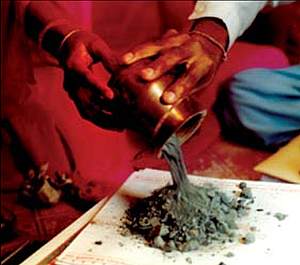
Ashes and bones of Ācārya Tulsi, preserved by a family in Gangāśahar 15 December 2002
References:
Babb, Lawrence A. Absent Lord: Ascetics and Kings in a Jain Ritual Culture. Berkeley: University of Cali fornia Press, 1996.
Bronkhorst, Johannes. "Les reliques dans les
religions de l'Inde." Indische Kultur im Kontext: Rituale, Texte und Ideen aus Indien und der Welt. Festschrift fur Klaus Mylius. Herausgegeben von Lars Gohler, 49-85. Wiesbaden: Harrassowitz, 2005.
Buhler, Georg. "Further Proofs for the Authenticity of the Jaina Tradition." Vienna Oriental Journal 4 (1890) 313-331.
Dundas, Paul. The Jains. Second Revised Edition. London: Routledge, 2002.
Dundas, Paul. History, Scripture and Controversy in a Medieval Jain Sect. London: Routledge, 2007 (Routledge Advances in Jaina Studies Vol. 2).
Flugel, Peter. "Jain Mortuary Rites and the Problem of the Jain stūpa." Report: British Academy Research Grant SG-31522. London, 6.4.2001
Flugel, Peter. "Relics and the Cult of Amulets
amongst the Sthānakavāsi Jains in Northwest India."
Report: Central Research Fund Grant AR/CRF/A. University of London, 28.1.2004 a.
Flugel, Peter. "Clandestine Rituals: Jaina Relic Worship and the Cultural Unconscious." Ritual Practices in Indian Religions and Contexts, Keynote Lecture, Lund University, 10.12.2004 b.
Flugel, Peter. "The Power of Death: Relic Worship amongst the Jainas." Asceticism and Power in South and Southeast Asia. Ed. P. Flugel & G. Houtman. London: Routledge (Royal Asiatic Society Series) (in press).
Germano, David & Kevin Trainor (eds.) Embodying the Dharma: Buddhist Relic Veneration in Asia. Albany: State University of New York Press, 2004.
Granoff, Phyllis. "Worship as Commemoration:
Pilgrimage, Death and Dying in Medieval Jainism." Bulletin DEtudes Indiennes 10 (1992) 181-202.
Granoff, Phyllis. "Biographical Writings Amongst the Śvetāmbara Jains in Northwestern India." According to Tradition. Hagiographic Writing in India. Ed. W.M. Callewaert & R. Snell, 131-158. Wiesbaden: Harrassowitz Verlag, 1994.
Jain, Sāgarmal. "Jaināgama Sāhitya mem Stūpa." Pandit Becardās Dośī Smrti Grantha. Eds. M. A. Dhaky & S. Jain, 132-140. Vārānasi: Pārśvanāth Vidyāśrama Śodha Samsthān, 1987.
Jaini, Padmanabh S. The Jaina Path of Purification. Berkeley: University of California Press, 1979.
Jayaswal, K. P. "Hāthigumphā Inscription Revised from the Rock." The Journal of the Bihar and Orissa Research Society 4 (1918) 364-403.
Jayaswal, K. P. & R. D. Banerji. "The Hathigumpha Inscription of Kharavela." Epigraphia Indica 20 (1929-30): 71-89. Delhi: Manager of Publitions,1933.
Kasturibai, M. & J. Varaprasada Rao. "Vaddamanu - An Early Jaina Site in Guntur District, Andrah Pradesh." Studies in Jaina Art and Iconography and Allied Subjects in Honour of Dr. U.P. Shah. Ed. R.T. Vyas, 27-34. Vadodara: Oriental Institute University of Baroda, 1995.
Laidlaw, James. "Profit, Salvation and Profitable
Saints." Cambridge Anthropology 9, 3 (1985) 50-70.
Laughlin, Jack C. Ārādhakamūrti/Adhisthāyakamūrti - Popular Piety, Politics, and the Medieval Jain Temple Portrait. Bern: Peter Lang, 2003.
Leumann, Ernst. "Beziehungen der Jaina-Literatur zu anderen Literaturkreisen Indiens." Actes du Sixieme Congres International des Orientalistes, Lei den (1885) 469-564.
Marshall, John Hubert. Taxila: An Illustrated Account of Archaeological Excavations carried out at Taxila under the Orders of the Government of India between 1913 and 1934. Vols. I-III. Cambridge: Cambridge University Press, 1951.
Parpola, Asko. "The Nāsatyas, the Chariot and Proto- Aryan Religion." Journal of Indological Studies 1617 (2004-2005) 1-63.
Pischel, Richard. Grammatik der Prakrit Sprachen. GrundriB der indo-arischen Philologie, etc. Band 1. Heft 8. StraBburg, 1900 (Grammar of the Prakrit Languages. Translated from German by Subhadra Jhā. Second Revised Edition. Delhi: Motilal Banarsidas, 1955/1981).
Schopen, Gregory. Bones, Stones, and Buddhist Monks. Collected Papers on the Archaeology, Epigraphy, and Texts of Monastic Buddhism in India. Honolulu: University of Hawai'i Press, 1997.
Schubring, Walther. Die Lehre der Jainas. Nach den alten Quellen dargestellt. Berlin: Walter De Gruyter & Co., 1935 (The Doctrine of the Jainas. Described after the Old Sources. Tr. Wolfgang Beurlen. With Three Indices Enlarged and Added by Willem Bollee and Jayandra Soni. Delhi: Motilal Banarsidas, 2000).
Settar, S. Inviting Death: Indian Attitude towards the Ritual Death. Leiden: E.J. Brill, 1989.
Shah, Umakant Premanand. Studies in Jaina Art. Benares: Pārśvanāth Vidyāpitha, 1955/1998.
Shāntā, N. La voie Jaina: histoire, spiritualite, vie des ascetespelerines de l'Inde. Paris: O.E.I.L., 1985 (The Unknown Pilgrims. The Voice of the Sādhvīs: The History, Spirituality and Life of the Jaina Women Ascetics. Tr. Mary Rogers. Delhi: Sri Satguru Publications, 1997).
Sircar, Dines Chandra (ed.). Select Inscriptions Bearing on Indian History and Civilization. Volume I. From the Sixth Century B.C. to the Sixth Century A.D. Calcutta: University of Calcutta, 1942.
Smith, Vincent A. The Jain Stūpa and the Antiquities from Mathurā. Allahabad: Archaeological Survey of India, 1901.
Strong, John S. The Relics of the Buddha. Princeton: Princeton University Press, 2004.
Tambiah, Stanley J. The Buddhist Saints of the Forest and the Cult of Amulets. Cambridge: Cambridge University Press, 1984.
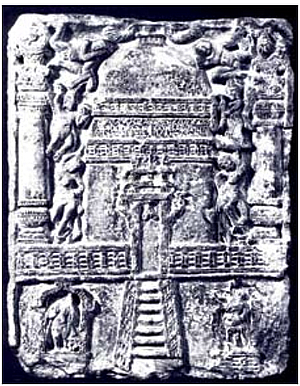
Fig. 8 Jain stupa on Āyāgapata relief in Kankāli-Tilā
 Dr. Peter Flügel
Dr. Peter Flügel